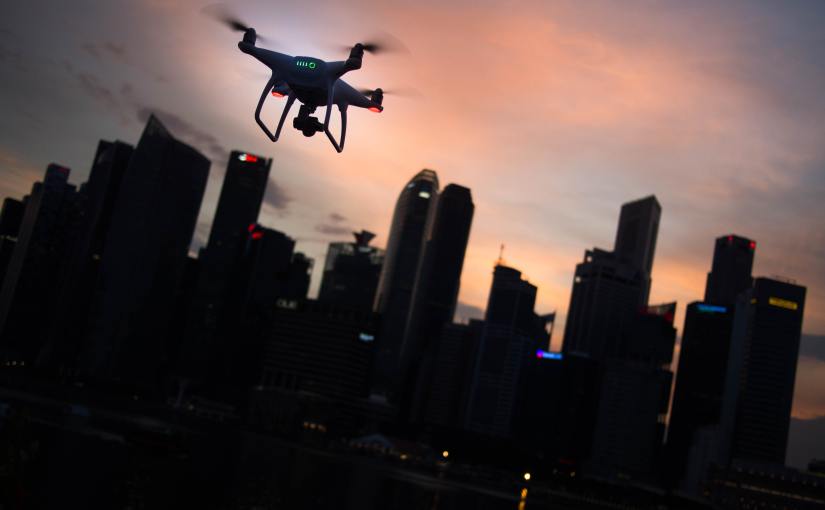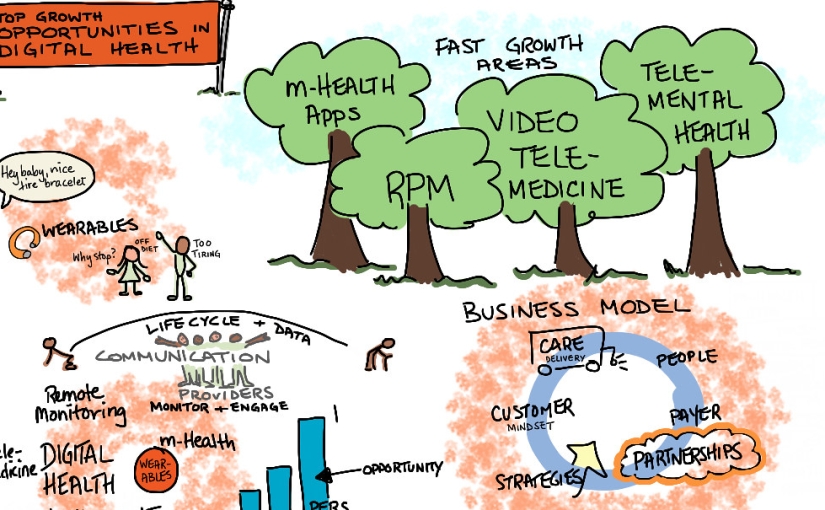Content aggregation platforms like JustDial are sites that collate, index and distribute hyperlinks to third-party content and displays it on a single webpage for their users’ reference.[1] Aggregators ensure listing of businesses by associating latter’s websites with their platforms using various tools such as deep-links, framing and meta-tags.
Deep-links are hyper-links in the form of an image or text which on selection redirects the user to the specific content/webpage of the source’s website.[2]
Framing is the process by which multiple webpages of another websites are displayed as separate windows/frames on a single webpage of the aggregator’s platform.[3]
Meta-tags are words and phrases in the HTML code of the website, related to the particular content, which become identifiable and a part of the search results when a user searches using the terms on search engine corresponding to the embedded words and phrases.[4]
The case of copyright, trademark and/or other proprietary rights of entities listed on its platform
Content aggregator’s ability to publish or post the relevant content that it obtains from the third-party sources is limited by the copyright and trademark laws of India and by the terms of any agreement entered into with the content-provider or listed entities.[5]
Observation: Aggregator lists business entities on its platform in exchange for a fee. If any entity willingly lists itself on the platform after paying a fee and agrees to the client’s terms of use which provides for use of the information/links/metatags of the business by the aggregator then there will be no violation of the copyright, trademark and/or other proprietary rights of entities listed on the platform.[6] However, if JustDial provides information on its platform about any listed entity, without any prior agreement or consent for utilizing the deep-links or separate frames to the website of the entity, then such links shall inadvertently infringe copyrights or trademarks owned by the entity’s website, as it results in by-pass or duplication of the information contained in the linked webpage.[7] Further, aggregator’s use of meta-tags of such listed entity will result in misapprehension in the mind of the former’s customers that it is authorized by or associated with the latter entity.[8]
Relevant Law: Copyright subsists in the “original literary works” such as the content of any website.[9] The Copyright Act 1957 (“the Act of 1957”) entitles the first owner i.e. the listed entity, with the exclusive right to reproduce, publish, perform, display, or create “derivative works” from its website’s content (primary works). [10] Therefore, a copyright is “deemed to be infringed” if any of these exclusive rights (listed entity’s rights to publish or create “derivative works” through deep-linking or framing respectively to its website) are exercised by the infringer without the permission of the former.[11] Further, the Trademarks Act 1999 (“the Act of 1999”) provides an inclusive definition of “mark” which includes the meta-tags of a website as well.[12] By virtue of the Act of 1999, unauthorized use of trademarks as meta-tags constitutes infringement of registered trademark.[13] However, deep-links, frames and meta-tags could be utilized subjected to “fair use” and “nominative use” exceptions.[14]
In PVR Ltd. v. Just Dial Ltd,[15] the Delhi High Court prima facie held that unauthorised listing of information (ticket-booking details, movie schedule, addresses and pictures of PVR movie theaters), as available on PVR.com, by JustDial using deep-links and frames to and meta-tags of PVR.com, gives the public impression that there is a nexus between the both. Thus, it resulted in exploitation of PVR’s goodwill by JustDial that amounted to copyright and trademark infringement and passing-off. It is considered as the first case in India which deals with the legality of content aggregation tools collectively.
The legality of use of deep-links, frames and meta-tags has also been questioned multiple times in cases of major jurisdictions such as the USA, the UK and Canada.[16] The majority of courts of these jurisdictions have held that the unauthorised use of deep-links, frames and meta-tags of primary website is deceptive to the public and has granted an injunction against content aggregation platforms.
What are the liabilities that the aggregator’s platform can incur due to the user reviews? What are the measures that aggregator’s platform can put in place to mitigate these liabilities?
Observation: Aggregator’s platform is also a user-review platform which gives its users the ability to review and rate the various businesses listed on its directories. Evaluation platforms/sites provide an opportunity for users to post comments on businesses, in addition to reviewing and ranking them.[17] Such reviews and ratings are usually couched in terms of opinion but could be extremely negative, false or defamatory at times. Since these reviews and ratings are entirely users’ opinions and user-generated contents, the consumer review site cannot be held liable for the same.[18]
Relevant Laws: A user-review platform is an ‘intermediary’ under the Section 2(w) of the Information Technology Act, 2000 (“IT Act”).[19] The ‘intermediaries’ like JustDial are granted an immunity under Section 79 of the IT Act from offences caused due to the user-generated content wherein such intermediary had no knowledge about the nature of content.[20] The Information Technology (Intermediary Guidelines) Rules, 2011 (“Intermediary Guidelines”) provide the due diligence requirements that must be observed by intermediaries to avail the safe-harbor protection (immunity).[21] However, upon receiving actual knowledge or being notified by the Government or its agency about any unlawful content on the platform, intermediaries are liable to take down or disable access to it.[22]
Indian Jurisprudence: In the case of Procentris India (Pvt,) Ltd. v. Mouthshut.com (Pvt.) Ltd.[23], Mouthshut (a popular consumer review site) was ordered by the Bombay High Court to delete reviews critical of Procentris. Subsequently, Mouthshut.com filed a writ petition in the Supreme Court for quashing the IT Rules, 2011 on account of it being violative of Articles 14, 19 and 21 of the Constitution of India. This case was clubbed with the petition in landmark case of Shreya Singhal v. Union of India which introduced ‘safe harbor’ provisions in India.[24]
International Jurisprudence: India doesn’t have enough record of litigations on the issue of liability incurred by consumer review sites due to user-reviews. However, there are significant precedents in international jurisdictions such as the USA, the UK and European Union which provide that no liabilities (except the take-down obligation on notice) are incurred by intermediaries (such as user-review sites) due to the false, incorrect and defamatory nature of the underlying user ratings and reviews as uploaded on their platforms.[25]
Recommended Measures:
In order to avoid liabilities with respect to user-reviews, an aggregator platform should put certain safeguards in its Terms and Conditions (“T&Cs”), in line with various international precedents, such as:
- Add a mandatory set of Community Guidelines which should specifically prohibit user-reviews which are false, unlawful, misleading, defamatory, harassing, or otherwise objectionable.[26]
- Add a clause in the T&C which will prevent users from posting user-reviews or ratings anonymously.[27]
- Add a clause in its Community Guidelines which strictly mandates the user-reviews to be unbiased and objective in order to prevent conflict of interest.[28]
- Forbidding users from posting any copyright or trademarked content in the user-reviews that they do not own.
- The T&C shall contain a clause indemnifying the platform from any liability for users’ content including user-reviews.
- The platform is required to deploy technology based automated tools or appropriate mechanisms with appropriate controls to proactively identify and remove access to unlawful content.[29]
(Views are personal only. The content of this blog should not be construed as legal advice in any case.)
References
[1] Jaani Riordan, The Liability of Internet Intermediaries, 28 (1st ed., 2016).
[2]Linking, Framing, Meta Tags and Caching, Berkman Klein Center for Internet & Society at Harvard University, Berkman Klein Center, available at https://cyber.harvard.edu/property00/metatags/main.html, last seen on 14/02/2020.
[3] Futuredontics Inc. v. Applied Anagramic Inc., 45 U.S.P.Q. 2d 2005 (1998, C.D. Cal.).
[4] World Wrestling Entertainment, Inc. v. Savio Fernandes, 2015 (62) PTC 573.
[5] Posting Third Party Content and Linking, American Bar Association, American Bar Association, available at https://www.americanbar.org/groups/business_law/migrated/safeselling/content/, last seen on 13/02/2020.
[6] Rajiv Kr. Choudhry, Data Extraction: Intersection of Copyright and IT laws in India, SpicyIP, available at https://spicyip.com/2013/10/data-extraction-intersection-of-copyright-and-information-technology-laws-in-india.html, last seen on 08/02/2020.
[7] TATA Sons Limited v. Hoop Anin and Ors., 2012 (188) D.L.T. 327; Washington Post v. Total News Inc., No. 97 Civ. 1190 (PKL) (1990, S.D.N.Y.).
[8] Mattel Inc. & Ors. v. Jayant Agarwalla & Ors., 2008 (153) D.L.T. 548.
[9] S. 13, The Copyright Act, 1957.
[10] S. 17, The Copyright Act, 1957; Eastern Book Company v. D.B. Modak, (2008) 1 SCC 1.
[11] S. 51, The Copyright Act, 1957.
[12] Ss. 2(m) & 2(zb), The Trade Marks Act, 1999; People Interactive (I) Pvt. Ltd. v. Gaurav Jerry & Ors., NMS (L) NO. 1504 of 2014.
[13] S. 29, the Trade Marks Act, 1999; Christian Louboutin Sas v. Nakul Bajaj, 2018 (76) PTC 508 (Del).
[14] S. 52, The Copyright Act, 1957; S. 30(2)(d), the Trade Marks Act, 1999.
[15] PVR Ltd. v. Just Dial Ltd., 2019 SCC OnLine Del 8181.
[16] Ticketmaster Corp. v. Microsoft Corp., No. 97-3055 DDP (1997, C.D. Cal.); Shetland Times Ltd. v. Jonathan Wills and Zetnews Ltd., S.C. 316 (1997, Court of Sessions); Imax Corp. v. Showmax Inc., (2000) 5 C.P.R. (4th) 81 (FCTD).
[17] A.S. Cheung & W. Schulz, Reputation Protection on Online Rating Sites, 21 Stanford Technology Law Review 310, 318 (2018).
[18] Braverman v. Yelp Inc., 5. No. 158299/2013 W.L. 712618, at 3 (2014, N.Y.S.C.).
[19] S. 2(w), The Information Technology Act, 2000.
[20] S. 79, The Information Technology Act, 2000. (“Safe-harbor” provisions)
[21] The Information Technology (Intermediary Guidelines) Rules, 2011.
[22] S. 79(3)(b), The Information Technology Act, 2000.
[23] NMSL 968-13 in SL 364-13-954.
[24] Procentris India (Pvt.) Ltd. v. Mouthshut.com (Pvt.) Ltd., AIR 2015 S.C. 1523.
[25] Mcgrath v. Dawkins, E.W.H.C. B3 (QB) (2012, U.K.H.C.) (This case is concerned with reviews and comments posted on the claimant’s book product page at Amazon.co.uk. The Court dismissed the claims of defamation against Amazon); Hassell v. Bird, 5 Cal. 5th 522 (2018, Cal. S.C.) (The US law firm sued its former client for defamation for posting a false negative review on the Yelp! platform, a consumer review site. The Supreme Court of California held that Yelp! clearly falls under Communications Decency Act, 47 U.S.C. § 230 immunity); Magyar Tartalomszolgaltatok Egyesulete v. Hungary, [2016] E.C.H.R. 135 (EU) (The Hungarian courts held the news portal liable for causing reputational harm to a business caused by “false and offensive” user comments. The European Court of Human Rights disagreed with national courts).
[26] Delfi A.S. v. Estonia, (2016) 62 E.H.R.R. 6. (The case concerned threats and anti-Semitic slurs in the user comments section of online newspaper portal, Estonian courts held, and the ECHR in 2015 affirmed, that the platform could be liable for those comments).
[27] Yelp Inc. v. Hadeed Carpet Cleaning, 752 S.E.2d 554, 568-69 (2014, (Va. Ct. App.). (The Court held that litigants may also target intermediaries with subpoenas seeking the identities of anonymous users for claims other than copyright, such as defamation)
[28] Moving & Storage, Inc. v. Panayotov, No. 12-12262-GA. (2014, U.S.D.C. D. Mass.) (when a moving-company review site owned by a particular moving company selectively deleted user-reviews that were beneficial to its competitors, the intermediary lost the “good faith” protection).
[29] Rule 9, The Information Technology [Draft Intermediaries Guidelines (Amendment) Rules] 2018.










![COVID-19 Lockdown Guidelines [updated with Addendum]: E-commerce for essential services, key takeaways & punishment under section 188 of IPC](https://lawforit.files.wordpress.com/2020/03/chemistry-4932607_1920.jpg?w=825&h=510&crop=1)